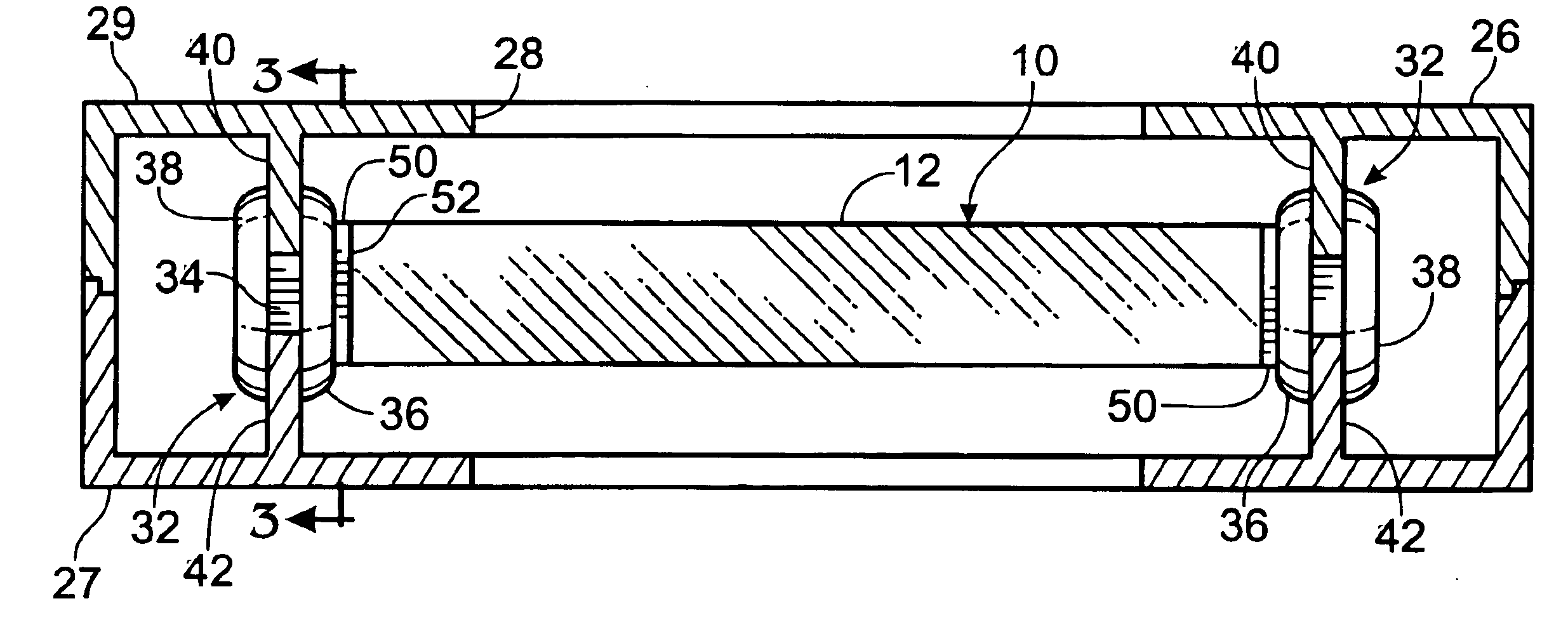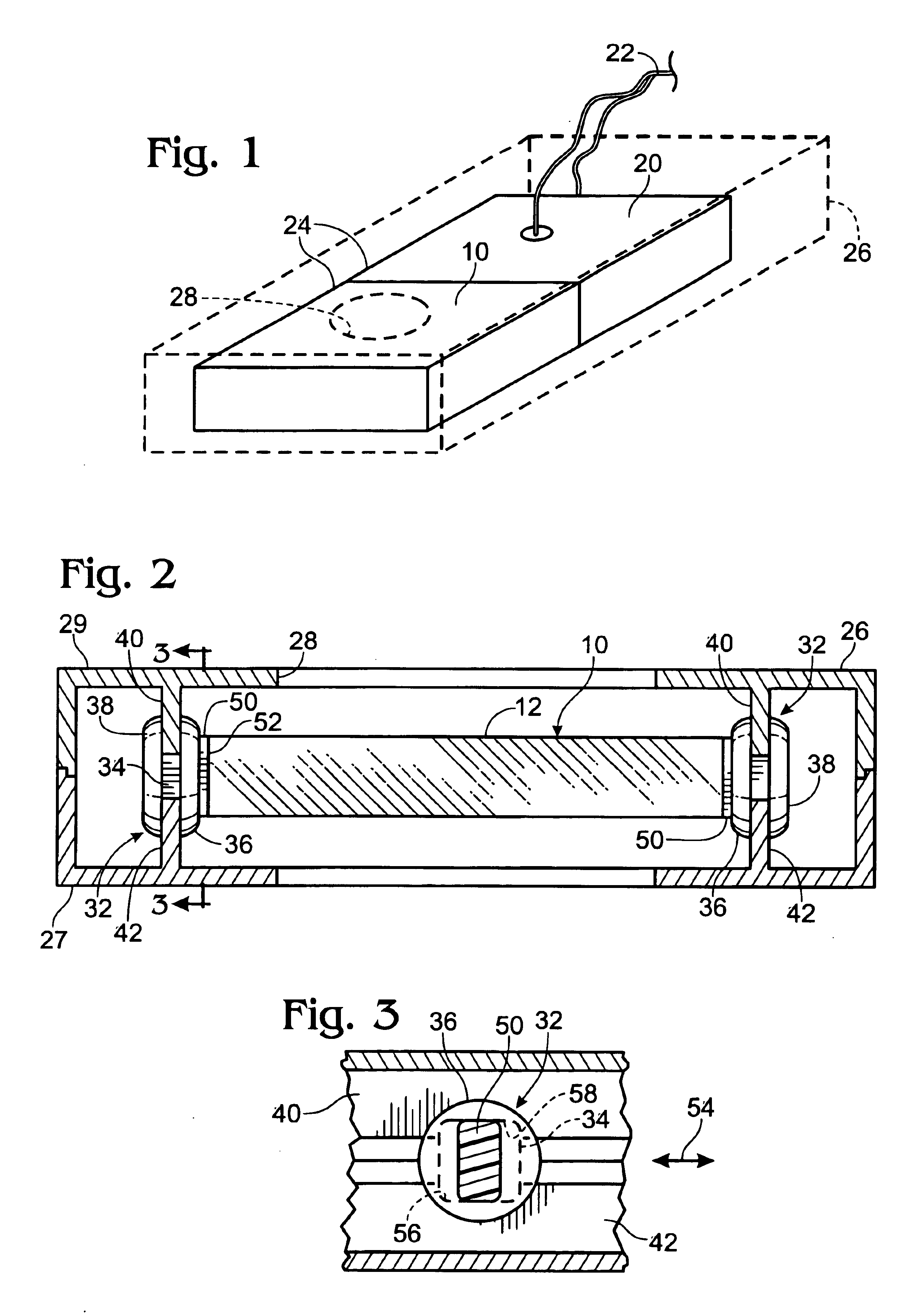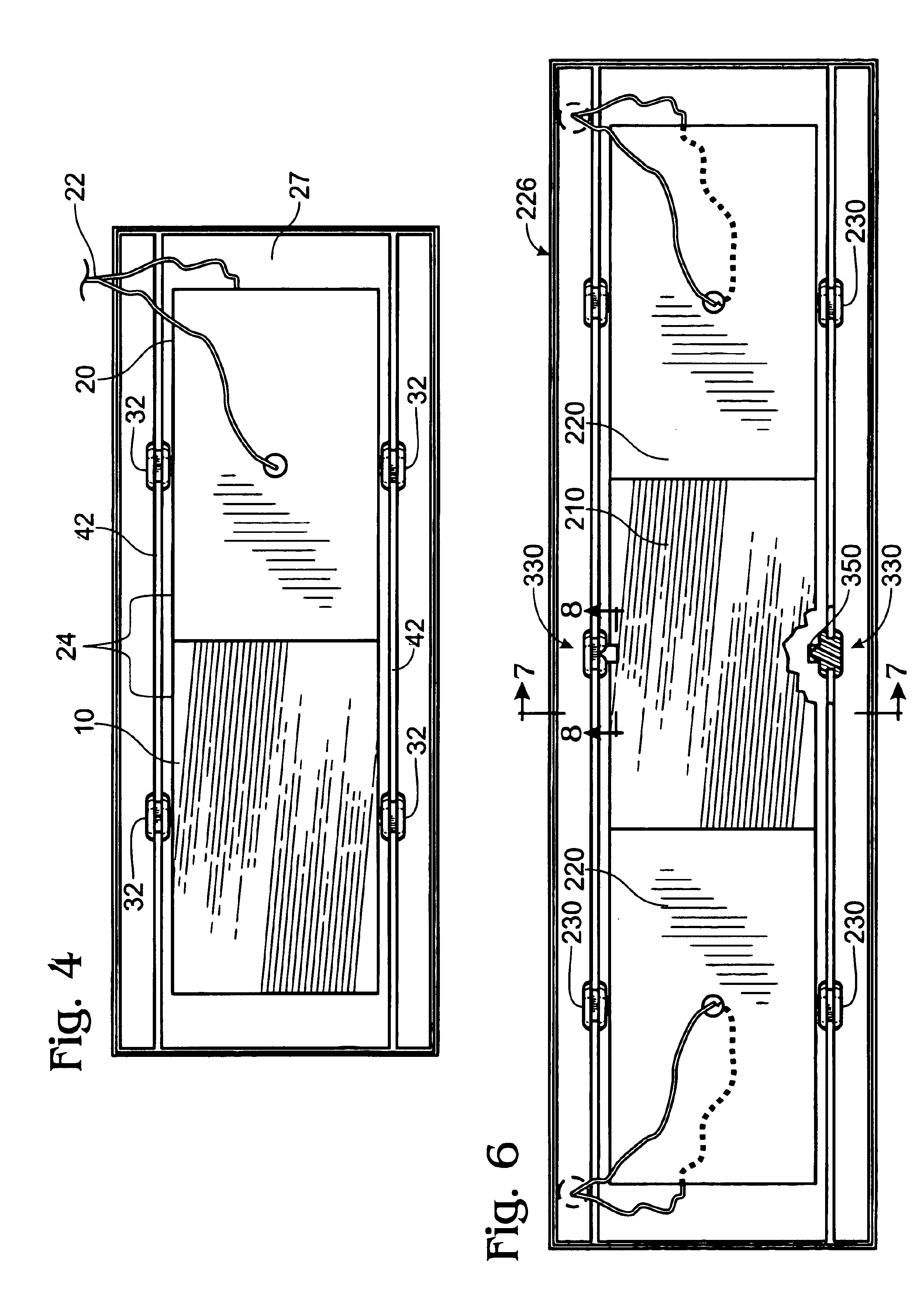Mounting system for an optical assembly of a photoelastic modulator
a technology of photoelastic modulator and optical assembly, which is applied in the direction of instruments, non-linear optics, optics, etc., can solve the problems of requiring more drive energy, affecting the overall performance quality factor, and unsatisfactory changes in the birefringence characteristics of the optical elemen
- Summary
- Abstract
- Description
- Claims
- Application Information
AI Technical Summary
Benefits of technology
Problems solved by technology
Method used
Image
Examples
Embodiment Construction
[0026]FIG. 1 depicts the primary components of a photoelastic modulator, including an optical element 10 formed of fused silica. Other material, such as fused quartz calcium fluoride, zinc selenide, silicon and others may be used to form the optical element.
[0027]The optical element 10 is an elongated bar having an entry surface 12 (FIG. 2) against which an incident light wave is directed while the photoelastic modulator is operating. (Other optical element shapes will be acceptable, such as the symmetrical shape depicted in U.S. Pat. No. 3,867,014 to Kemp). A quartz, piezoelectric transducer 20 is bonded to one end of the optical element 10. Electrical leads 22 from the transducer are connected to a driver circuit (not shown) for vibrating the optical element 10. The driver circuit may be tuned to drive the fused-silica element 10 to vibrate at its natural resonant frequency, typically about 50 kHz.
[0028]The optical element 10 and transducer 20 (hereafter collectively referred to a...
PUM
| Property | Measurement | Unit |
|---|---|---|
| frequency | aaaaa | aaaaa |
| resonant frequency | aaaaa | aaaaa |
| elastomeric | aaaaa | aaaaa |
Abstract
Description
Claims
Application Information
 Login to View More
Login to View More - R&D
- Intellectual Property
- Life Sciences
- Materials
- Tech Scout
- Unparalleled Data Quality
- Higher Quality Content
- 60% Fewer Hallucinations
Browse by: Latest US Patents, China's latest patents, Technical Efficacy Thesaurus, Application Domain, Technology Topic, Popular Technical Reports.
© 2025 PatSnap. All rights reserved.Legal|Privacy policy|Modern Slavery Act Transparency Statement|Sitemap|About US| Contact US: help@patsnap.com



